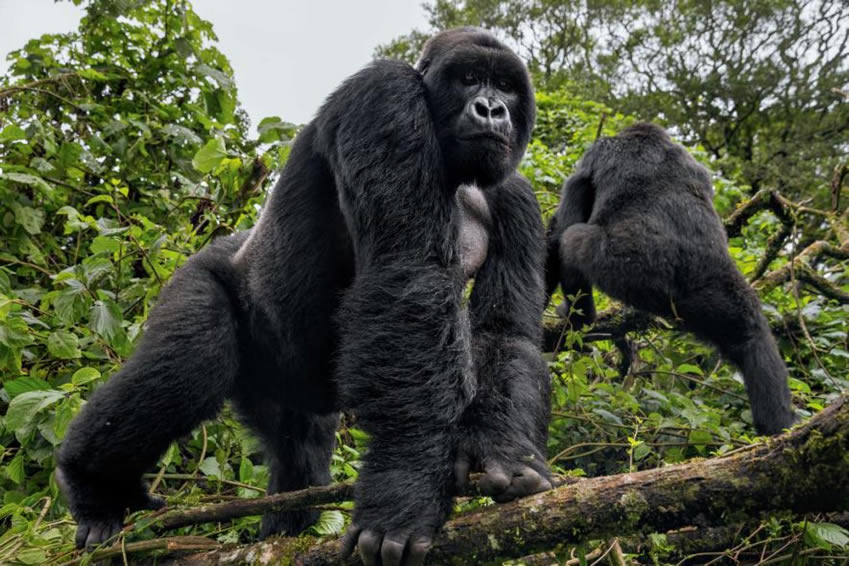Why Is The Gorilla Population Not Booming?
In the early 1980s, the mountain gorilla population was less than 300 mountain gorillas in the whole world. This combined Bwindi impenetrable national park, Mgahinga gorilla national park, Volcanoes national park and Virunga national park which are the only remaining natural habitats for the mountain gorillas. By the early 90s; the time where most of the conservation efforts in Uganda began, the population was still around 300 individuals in the whole world.
Over a period of 18 years according to the 2008 census report, there were around 680 mountain gorillas in the whole world. Fast forward to 2025, there are around 1100 mountain gorillas remaining in the whole world. In a period of close to forty years, there has been a population increase of less than 1000 mountain gorillas in all the three countries.

When we consider the Rwanda annual gorilla naming ceremony that has recorded 437 mountain gorillas born in the last 20 years, we cannot but wonder why there has not been a mountain gorilla population boom. If Volcanoes national park which has a smaller popular than Bwindi impenetrable national park can on average record a minimum of twenty mountain gorilla births every year, we cannot but wonder why there has not been a 50 gorilla increase in population per year!
For instance early this month, Rwanda reported forty mountain gorilla births during the Kwita Inzina this year. Though we do not have the current census report, the mountain gorilla population would have already shot above the one thousand two hundred mark. Poaching; which was one of the major conservation threats is currently at the lowest. Apart from Congo; Uganda and Rwanda are currently recording their highest gorilla permit sales ever. So this begs the question, why is there no population boom regardless of the babies born annually?

The population is indeed increasing but it seems not to the degree of the baby birth. Uganda wildlife Authority and Rwanda development board has not issued a reason to why it is so but here are some of the possible reasons to why there is no gorilla population boom regardless of several babies being born annually.
It is very likely that the main impediment to mountain gorilla conservation is the high infant mortality. The birth of the babies does not mean that they all grow up. If humans with hospitals still lose their babies regardless of the treatment, chances are very high that the mountain gorilla babies suffer the same fate in the wild. The veterinary team may intervene in several cases but it will and cannot intervene in every case.
The jungle is not a tamed paradise, fights still happen with in the same group. Animals falls from trees. The babies are the ones who are fond of climbing high and so accidents are more common among babies than adults. It is part of their way of life. They are very playful and that also comes with several injuries.

Gorilla trekking and Habituation Experience in Uganda
Chances are also high that where the mother suffers issues such as snares, the babies are also affected. The mountain gorillas have an infant dependance of three to four years. If anything happens to the mother during this time; which sometimes happens, the baby is directly affected. I believe these are some of the challenges that are more natural than they are human imposed. On the quest of allowing nature to take its course, the population is directly affected over time.
In conclusion, the mountain gorilla population is not booming because of the natural causes that affect their breeding. There is less that could be done about it other than continuing to conserve the habitats of the gorillas, gorilla trekking to raise more conservation funds, community conservation initiatives among several other activities.

 Previous Post
Previous Post